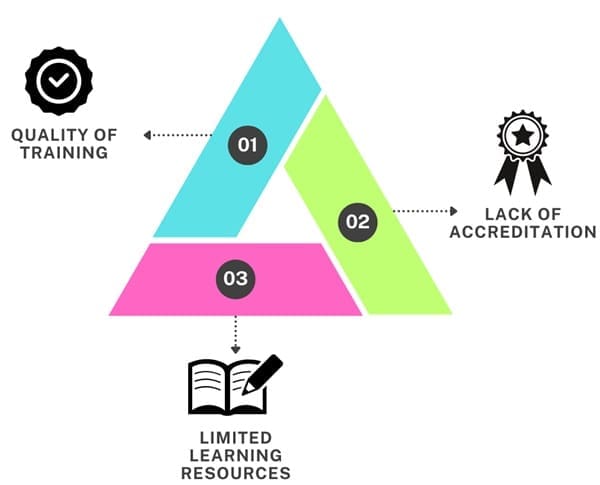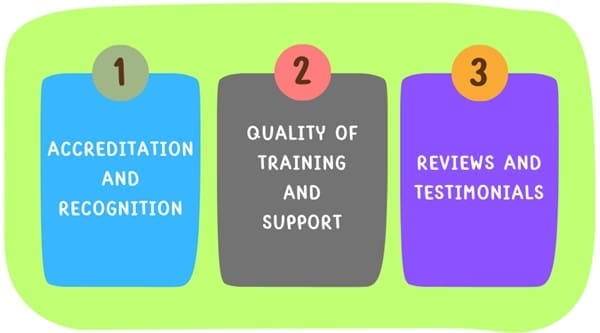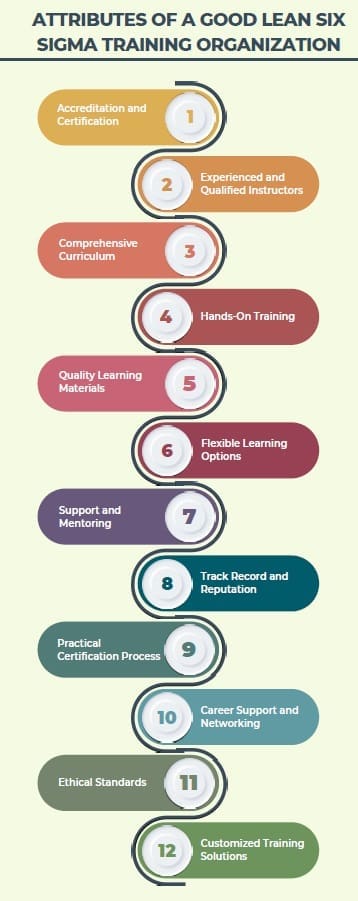In the world of professional development, the Six Sigma Green Belt certification is very valuable. It helps people become experts in improving processes and making businesses run better. But, there are many certification options out there, and some of them are very cheap.
A $100 Green Belt certification might seem like a great deal, but it can have many problems. This article will explain why you should be careful with such low-cost certifications and how to make the best choice for your career.
Table of contents
- Six Sigma Green Belt Certification
- The Pitfalls of a $100 Green Belt Certification
- Difference Between Cheap and Premium Green Belt Courses
- Consequences of Choosing a Cheap Certification
- What to Look for in a Reputable Green Belt Certification?
- Real-Life Examples and Testimonials
- Alternatives to Cheap Certifications
- Attributes of a Good Lean Six Sigma training organization
- Final Words
- Related Articles
Six Sigma Green Belt Certification
A Six Sigma Green Belt is a person who understands Six Sigma methods very well and can lead projects or help others with bigger projects. Green Belts are important for finding and fixing problems in business processes. Getting this certification can really help your career by teaching you about statistical analysis and project management.
Usually, a good Six Sigma Green Belt certification costs between $500 to $2000. This price includes thorough training, exam fees, study materials, and sometimes even mentoring. The higher cost often means better quality education and a certification that employers trust.
The Pitfalls of a $100 Green Belt Certification

A. Quality of Training
The biggest issue with a $100 Green Belt certification is the quality of the training. These cheap programs often don’t cover all the important parts of Six Sigma. They might miss out on things like statistical analysis, process mapping, and finding the root causes of problems. Also, the teachers might not be experienced or qualified.
B. Lack of Accreditation
Accreditation is very important for a certification. Good Six Sigma certifications are approved by well-known organizations like the American Society for Quality (ASQ) or the International Association for Six Sigma Certification (IASSC). This approval means the certification meets industry standards and is recognized everywhere. But many $100 certifications don’t have this approval, so employers might not accept them, making them almost useless for advancing your career.
C. Limited Learning Resources
Good Six Sigma training includes practical exercises, real-world examples, and continuous support. Cheap programs often don’t have these important parts. Without hands-on practice, you might find it hard to use what you’ve learned in real-life situations. Also, these programs usually offer little to no support, leaving you without help when you need it.
Difference Between Cheap and Premium Green Belt Courses
| Basis | Cheap Green Belt Certification ($100) | Premium Green Belt Certification ($500 – $2000) |
| Quality of Training | Basic and shallow content | Detailed and thorough content |
| Accreditation | Often unapproved | Approved by known organizations (ASQ, IASSC) |
| Instructors | Inexperienced and unqualified | Experienced and certified professionals |
| Learning Resources | Limited materials, no practical exercises | Extensive materials with hands-on practice |
| Support | Little to no mentoring or support | Continuous support and mentoring |
| Recognition | Not recognized by employers | Widely recognized and respected |
| Career Impact | Limited and possibly negative | Positive and significant career growth |
| Cost | Low upfront cost but possible hidden fees | Higher upfront cost with all-inclusive services |
Consequences of Choosing a Cheap Certification
Career Impact
Choosing a $100 Green Belt certification can hurt your career. Employers know that not all certifications are the same and might doubt a cheap one. This doubt can make it harder for you to get jobs, promotions, or higher salaries. Investing in a good certification can make you more trustworthy in the job market.
Financial Impact
While a $100 certification might seem like a good deal at first, hidden costs can add up. Many cheap programs charge extra for study materials, retaking exams, or renewing the certification. Good programs often include these services in the initial cost. Also, a cheap certification that employers don’t value can limit your career growth and earning potential, making the initial savings not worth it.
What to Look for in a Reputable Green Belt Certification?

Accreditation and Recognition
When choosing a Six Sigma Green Belt certification, look for programs approved by well-known organizations like ASQ or IASSC. This approval means the certification is up to industry standards and recognized globally. Check the accrediting body’s website or contact them to verify the certification.
Quality of Training and Support
A good program should cover all aspects of Six Sigma, including statistical analysis, process mapping, and project management. Experienced teachers and mentors can provide valuable help and insights. Good programs also include practical exercises, case studies, and real-world examples to enhance your learning.
Reviews and Testimonials
Read reviews and testimonials from past students to see their experiences. Look for feedback on the quality of training, support, and overall satisfaction. Be wary of programs with many negative reviews or a lack of transparency. Positive testimonials from respected professionals are a good sign of a program’s quality.
Real-Life Examples and Testimonials
Case Studies:
- John’s Experience: John, a process engineer, chose a $100 Green Belt certification. After finishing, he found the training was shallow and not practical. His employer did not recognize the certification, so John had to spend more time and money on a reputable program later.
- Emily’s Testimonial: Emily, a project manager, invested in a well-known Green Belt certification. The thorough training and support she received helped her lead successful projects. Her certification was recognized and valued by her employer, leading to a promotion and salary increase.
Alternatives to Cheap Certifications
- Investing in Accredited Programs: Accredited programs might cost more initially, but they offer long-term benefits and higher returns. These programs provide in-depth training, practical applications, and recognized credentials, making them a valuable addition to your professional skills.
- Employer-Sponsored Training: Ask your employer to invest in your professional development. Many companies are willing to sponsor employee training if they see the value. Employer-sponsored training can reduce your financial burden while ensuring you receive high-quality education.
- Scholarships and Financial Assistance: Look for scholarships and financial aid opportunities. Some institutions offer financial help to cover the cost of certification programs. Payment plans and discounts might also be available, making good programs more affordable.
Attributes of a Good Lean Six Sigma training organization

Here are the attributes to look for:
- Accreditation and Certification: Recognized and approved by reputable organizations such as the American Society for Quality (ASQ), International Association for Six Sigma Certification (IASSC), or Lean Six Sigma Institute.
- Experienced and Qualified Instructors: Trainers with substantial practical experience in Lean Six Sigma methodologies. Instructors should hold advanced certifications (e.g., Black Belt or Master Black Belt). Also, they have a proven track record of successful project implementations.
- Comprehensive Curriculum: A well-structured and detailed syllabus that covers all essential aspects of Lean Six Sigma, including DMAIC (Define, Measure, Analyze, Improve, Control) methodology, statistical analysis, and process improvement techniques.
- Hands-On Training: Opportunities for practical application through simulations, projects, and workshops. Inclusion of interactive exercises that enable participants to apply what they have learned in real-world scenarios.
- Quality Learning Materials: Access to up-to-date, high-quality learning resources. It includes textbooks, e-learning modules, and reference guides.
- Flexible Learning Options: Various training formats, including in-person, online, and hybrid models to accommodate different learning preferences and schedules. Self-paced options for those who need flexibility in managing their study time.
- Support and Mentoring: Access to ongoing support from instructors and mentors during and after the training. Availability of discussion forums, study groups, and one-on-one coaching sessions.
- Track Record and Reputation: Positive reviews and testimonials from past participants. A history of successful alumni who have advanced their careers and delivered significant results in their organizations.
- Practical Certification Process: A rigorous and transparent certification process that includes both theoretical exams and practical project evaluations.
- Career Support and Networking: Assistance with job placement and career advancement through partnerships with industry leaders and job boards.
- Ethical Standards: Commitment to ethical training practices, including transparency in pricing, honest marketing, and respect for intellectual property.
- Customized Training Solutions: Ability to tailor training programs to meet the specific needs of different industries and organizations.
Final Words
While a $100 Green Belt certification might seem attractive, it’s important to consider the risks and long-term consequences. The quality of training, lack of accreditation, and limited learning resources associated with cheap programs can seriously impact your career and finances.
Prioritize quality and accreditation when choosing a certification program to ensure your investment is worthwhile. Make informed decisions about your professional training to enhance your career and achieve lasting success.

About Six Sigma Development Solutions, Inc.
Six Sigma Development Solutions, Inc. offers onsite, public, and virtual Lean Six Sigma certification training. We are an Accredited Training Organization by the IASSC (International Association of Six Sigma Certification). We offer Lean Six Sigma Green Belt, Black Belt, and Yellow Belt, as well as LEAN certifications.
Book a Call and Let us know how we can help meet your training needs.




















It is amazing how something as beneficial as Six Sigma can be diluted. It has gotten to the point that you are able to “attend” an online presentation and just work your way through the slides and at the end is your “certification” If you do not have to work at something and it just seems easy be very skeptical. The market is changing and we are seeing many more requests for proper credentials of a BB’s knowledge, the many subpar providers are nearing the end of their reign and organizations are realizing that not all certified Belts are created equally. Don Drury — CEO – SSMI (Six Sigma Management Institute)